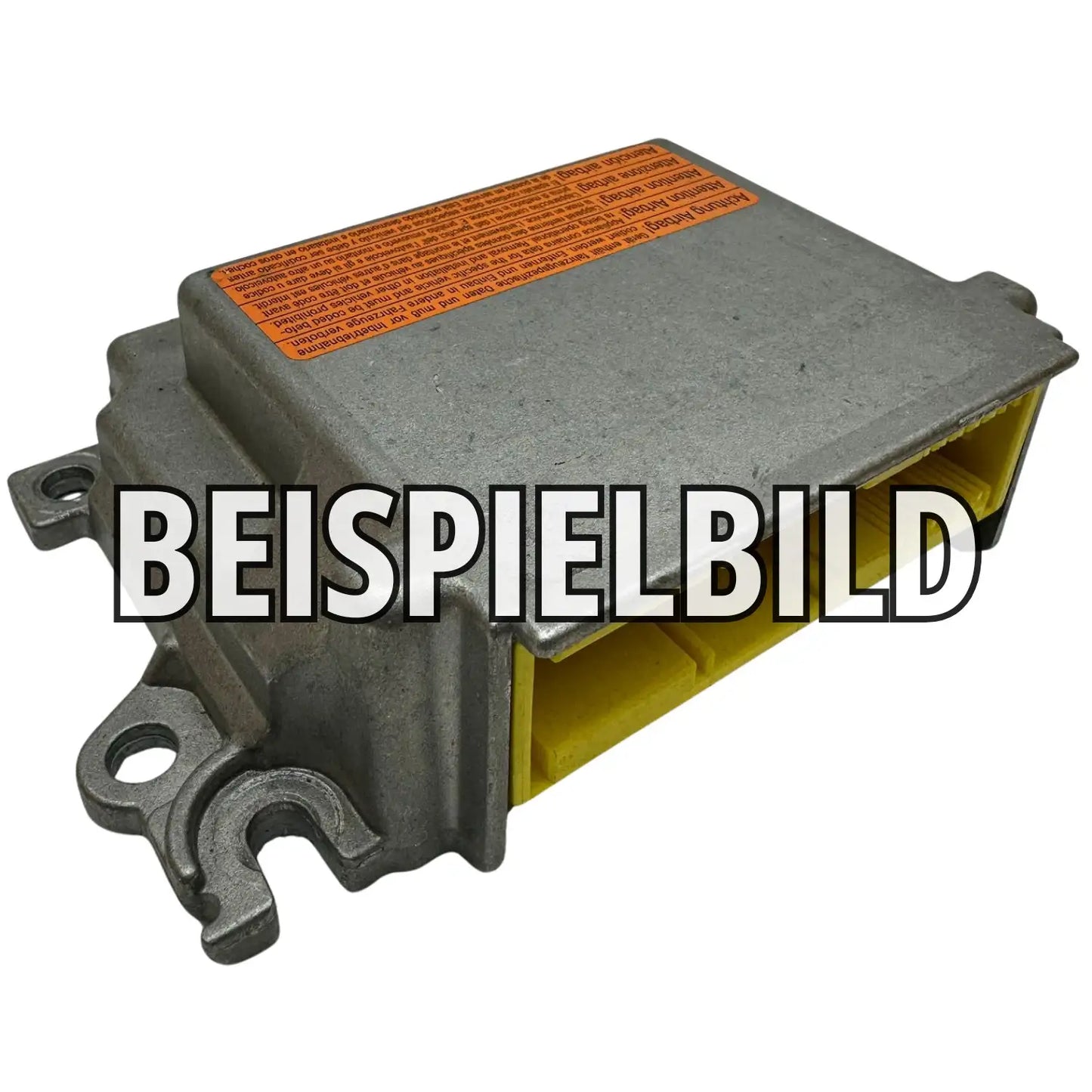What is a Honda Pilot 1st Gen airbag control module?
The Honda Pilot 1st Gen airbag control unit is the central safety unit that activates all occupant restraint systems, such as airbags and seatbelt pretensioners, in the event of a crash. It continuously monitors sensors, stores relevant crash data, and ensures the proper functioning of the entire airbag system to guarantee occupant safety.
This essential module, also called the SRS (Supplemental Restraint System) Control Module, serves as the brain of your vehicle's passive safety system.
It receives signals from impact sensors and triggers the appropriate protection systems when necessary. Proper functioning of the control unit is crucial for your safety.
Why is the Honda Pilot 1st Gen airbag control unit defective?
A Honda Pilot 1st Gen airbag control module can malfunction because it stores crash data after an accident, has internal electronic errors, or has been damaged by power surges. These internal or stored errors prevent the airbag system from functioning properly and often require professional Honda Pilot 1st Gen airbag control module repair or module replacement.
Airbag control units often store irreversible crash data after an accident, even if the airbags were not deployed.
This blocks the system and causes the SRS warning light on the dashboard to activate.
Internal electronic defects, short circuits or age-related wear and tear can also cause the control unit to stop functioning.
A faulty power supply or poor ground connections are other possible causes of failure that may require a Honda Pilot 1st Gen airbag control unit repair.
Common error codes for Honda Pilot 1st Gen airbag control unit repair
When repairing a Honda Pilot 1st Gen airbag control unit, specific trouble codes are crucial because they provide insight into the exact cause of the problem, whether it's an airbag module issue, internal control unit fault, or a shorted wiring. These diagnostic codes help professionals determine the correct course of action and perform an effective repair.
-
1-1→ Open circuit or high resistance → Driver side airbag module circuit fault -
1-2→ High resistance → Driver side airbag module circuit fault -
1-3→ Short circuit to another wire or low resistance → Fault in the driver side airbag module circuit -
1-4→ Short circuit to positive → Error in the driver's side airbag module circuit -
1-5→ Short circuit to ground → Fault in the driver's side airbag module circuit -
2-1→ Open circuit → Passenger side airbag module circuit fault -
2-2→ High resistance → Passenger side airbag module circuit fault -
2-3→ Short circuit to another wire or low resistance → Fault in the passenger side airbag module circuit -
2-4→ Short circuit to positive → Error in the passenger side airbag module circuit -
2-5→ Short circuit to ground → Fault in the passenger side airbag module circuit -
87-31→ Internal error → Airbag ECU module itself -
91-1x→ Internal error → Airbag ECU module itself -
91-2x→ Short circuit → SRS indicator circuit -
85-63→ Inconsistent model ID code or variation code → Control unit ID -
85-64→ Inconsistent ECU Serial ID Code → Control Unit ID
What part numbers are available for the Honda Pilot 1st Gen airbag control unit repair?
When repairing a Honda Pilot 1st Gen airbag control unit, the exact OEM part number is crucial to ensure compatibility, as there are specific variants for the 1st generation Honda Pilot (2003-2008). These numbers, often from Honda or Denso, must match exactly to ensure smooth operation and avoid failures.
The part numbers below are 100% verified and only fit the airbag control unit of the Honda Pilot 1st generation.
It is important to accurately match the number of your original module, as correct identification is essential for successful Honda Pilot 1st Gen airbag control unit repair.
-
77960-TG7-A21→ Original OEM → Honda (Denso) -
77960TG7A110M2→ Original OEM → Honda (Denso) -
77960TG7A110→ Alternative → Honda (Denso) -
77960TG7A100→ Alternative → Honda (Denso) -
77960S9VA013C1→ Original OEM → Honda
Compatible models & programming for the Honda Pilot 1st Gen airbag control unit repair
The airbag control unit is specifically designed for the 1st generation Honda Pilot (model years 2003-2008) and requires vehicle-specific programming to the vehicle identification number (VIN) after installation. This coding is essential to restore full functionality of the safety system, prevent further errors, and ensure safety after the Honda Pilot 1st Generation airbag control unit repair.
This module is compatible with all variants of the Honda Pilot from 2003 to 2008 as long as the part number matches.
It controls all integrated safety components such as front, side and curtain airbags as well as seat belt pretensioners.
After replacing or repairing the Honda Pilot 1st Gen airbag control unit, the module must be reprogrammed with the vehicle's VIN by a qualified technician.
This is the only way to extinguish the warning light and make the system fully functional again.


